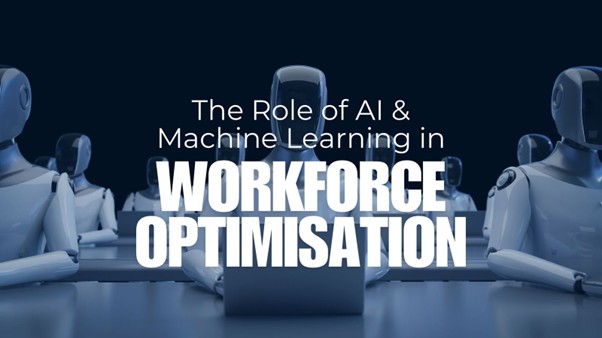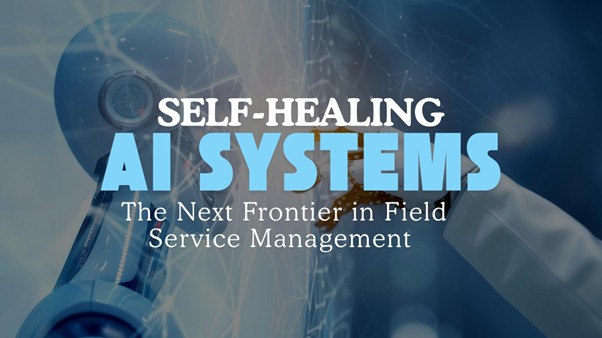The Role of AI and Machine Learning in Workforce Optimization!

Enjoy AI-powered Workforce Management to Automate Scheduling, Boost Field Service Operations, and Maximize Productivity!
Thanks to its features, AI and machine learning have revolutionized workforce management in 2025. Now, businesses can automate scheduling, boost decision-making, and reduce inefficiencies using AI. Intelligent field service solutions enhance the operations of a remote workforce by increasing productivity and allowing enterprises to scale efficiently. In addition, AI-driven workforce management enhances operational productivity to the next level.
Traditional practices tend to focus first on reactive decision-making, computerized workforce management contours, and calendar scheduling approaches, which are costly and inefficient. AI and ML, on the other hand, radically change workforce optimization by removing key steps, predicting which resources to use, and reallocating work based on current data.
Intelligent field service solutions and AI-based workforce management systems automate and integrate various business functions, allowing employees to do more advanced and productive work.
Key Takeaways…
- Companies with AI-driven workforce management can increase operational competence, improve decision-making, and optimize automated scheduling.
- Intelligent field service solutions ensure increased productivity and cost savings by streamlining operations for distant workers.
- Data-driven decision-making is made possible by workforce monitoring and predictive analytics driven by AI.
- AI will be included in future developments in field service automation, self-service portals, and human resources.
- AI-based workforce solutions give businesses a significant competitive edge.
How can AI & ML Transforms Workforce Optimization?
1. AI-Powered Predictive Workforce Planning
Businesses can use predictive analytics to forecast workforce needs and make hands-on recruitment decisions. AI estimates future workforce necessities by leveraging market trends, employee performance measures, and previous workforce data.
Key benefits include:
- Minimizing needless labor expenses and avoiding understaffing or overstaffing.
- Optimizing the distribution of resources in response to variations in demand.
- Increasing worker flexibility through market and seasonal trend adaptation.
Businesses can use AI to ensure optimal employment levels by moving from reactive to predictive workforce planning.
2. Smart Scheduling & Dynamic Task Allocation
AI-driven workforce management has a noteworthy progression: automated scheduling. AI-powered scheduling systems scrutinize numerous variables in real time, including staff access, proficiency, location, and operational demands.
How AI-driven scheduling outperforms traditional methods:
Feature | Traditional Scheduling | AI-Powered Scheduling |
Task Assignment | Manual, prone to errors | Automated, data-driven |
Flexibility | Fixed, hard to adjust | Dynamic, real-time |
Efficiency | Time-consuming | Optimized, seamless |
Cost Reduction | Higher operational costs | Minimized through AI |
AI also makes dynamic job allocation possible by automatically modifying assignments in response to real-time modifications, such as last-minute client demands or unplanned absences. This guarantees worker flexibility and improves operational efficiency.
3. Intelligent Field Service Solutions for Remote Workforce Management
Field service operations face particular difficulties, such as manual tracking, delayed service replies, and inefficient routes. The following are some ways that AI-powered intelligent field service solutions maximize worker deployment.
- Smart Routing: Using AI, the field workforce saves time and money on fuel by leveraging the most effective routes.
- Real-Time Tracking: Managers gain workforce behavioral insights and guarantee operational flexibility and productivity.
- Automated Reporting: AI allows managers to automate service reports without physical paperwork, reducing organizational workload.
Businesses using intelligent field service solutions increase workforce productivity, enhance consumer response time, and reduce overhead costs.
4. AI-Driven Performance Monitoring & Workforce Analytics
Businesses can improve staff performance assessment and workforce scheduling by evaluating AI-generated, real-time data. It helps managers analyze operational productivity, detect staffing patterns, and provide valuable insights for continuous growth.
How AI Enhances Workforce Analytics:
- AI suggests the right training package/course after detecting ability gaps in the workforce.
- It maximizes work delegation by providing predicted performance insights.
- Artificial Intelligence tracks productivity trends and detects inadequacies at an early stage.
Organizations using AI-driven workforce management make data-proven decisions to use talent productively and boost operational competence.
Benefits of AI and Machine Learning in Workforce Optimization!
1. Increased Efficiency & Productivity
AI increases productivity through scheduling, resource allocation, and routine tracking. It also gives staff the freedom to focus on high-value work.
2. Cost Reduction & Resource Optimization
With AI-driven workforce management, businesses can save a great deal of money in worker-level optimization, reduction of overtime expenses, and reduction of task distribution inefficiencies.
3. Enhanced Decision-Making with Predictive Analytics
Real-time workforce insights generated by AI-powered analytics allow managers to make data-driven decisions. Predictive models enable workforce requirement prediction to keep from being at the last minute.
4. Improved Employee Satisfaction & Retention
Based on AI, the scheduling is equitable, workloads are well balanced, and jobs are better matched to worker competencies. This leads to less burnout, more engagement, and increased job satisfaction.
5. Smarter & More Agile Field Service Operations
The intelligent field service solutions reduce operational overhead and enhance response time and customer satisfaction by optimizing real-time task allocation, route planning, and performance tracking.
Challenges in AI-Driven Workforce Management Implementation
Despite its numerous advantages, AI adoption comes with specific challenges:
- Data Security & Privacy Concerns: The extensive use of labor data poses security and privacy issues. Strict data protection procedures are necessary to ensure businesses meet legal requirements.
- Integration with Legacy Systems: Firms find bundling AI-powered technologies with antiquated workforce management systems difficult. A comprehensive transition plan is required to ensure a smooth deployment.
- Employee Resistance & Training Needs: Being able to implement AI requires employees to adapt to new technology. Only businesses fund these training efforts to explain why employees should understand the benefits of AI-driven products.
The Future of Workforce Optimization with AI & ML
Even more sophisticated solutions are anticipated as AI-driven workforce management develops, such as:
- Automated HR decision-making: AI-powered HR solutions for hiring, performance reviews, and employee involvement.
- AI-based workforce self-service websites: Enables staff members to control their schedules dynamically.
- Advanced field service automation: AI bots help field service technicians with debugging and testing in real-time.
Businesses will have a sustained competitive edge if they adopt AI and intelligent field service solutions, which will spur innovation and efficiency throughout their personnel practices.
Conclusion
AI and ML play crucial roles in evolving workforce management. They automate organizing and improve decision-making tactics, optimizing task allocation within the company. Companies that use intelligent field service solutions and AI-driven workforce management see increases in productivity, cost reductions, and employee satisfaction.
Find out how FieldEZ can assist your company in implementing AI-driven workforce optimization for optimal productivity and expansion!
Frequently Asked Questions (FAQs)
1. How has AI changed the workforce management game?
AI increases productivity by scheduling, allocating work, and supplying data-driven insights, minimizing human error.
2. Which sectors benefit from intelligent field service solutions?
Industries such as healthcare, manufacturing, utilities, and logistics enjoy the enormous advantages of AI-powered workforce optimization.
3. Is AI-driven workforce management affordable?
Although AI requires a one-time investment, the long-term cost benefits, such as resource optimization and increased productivity, are significant.
4. Can AI replace human workforce managers?
AI is better for labor management but is never a substitute for human knowledge. As such, it is best used as a decision-support tool.
5. How can FieldEZ contribute to your business’s AI-driven workforce management?
FieldEZ offers best-in-class AI-powered workforce optimization services. It helps enterprises systematize scheduling, optimize field service operations, and enhance productivity.



